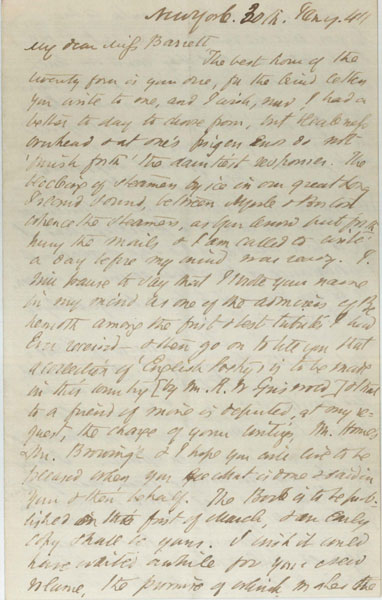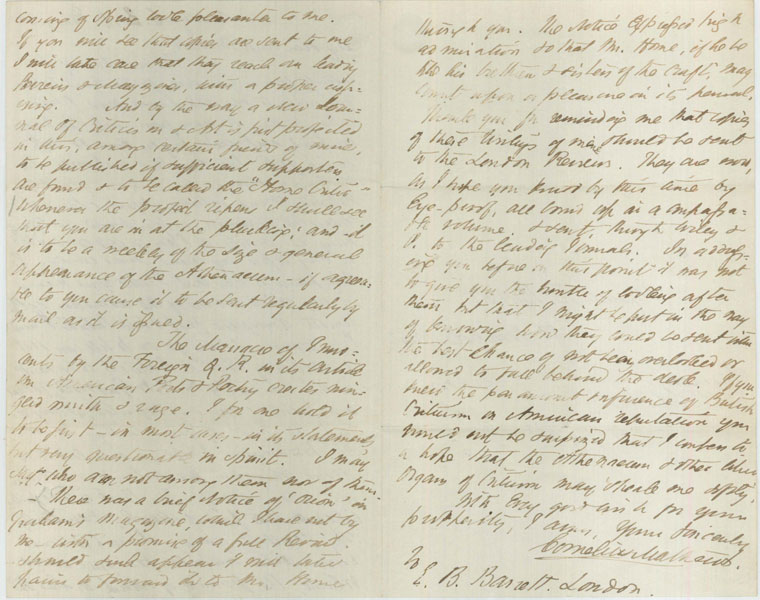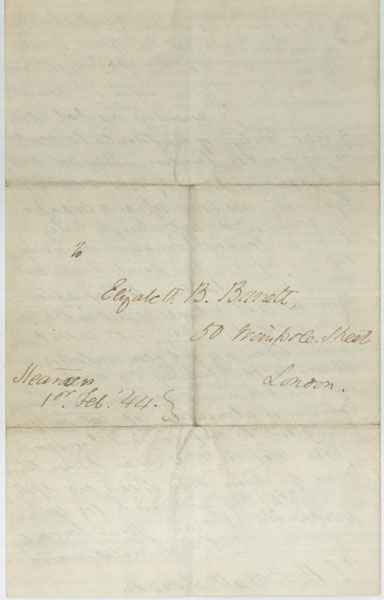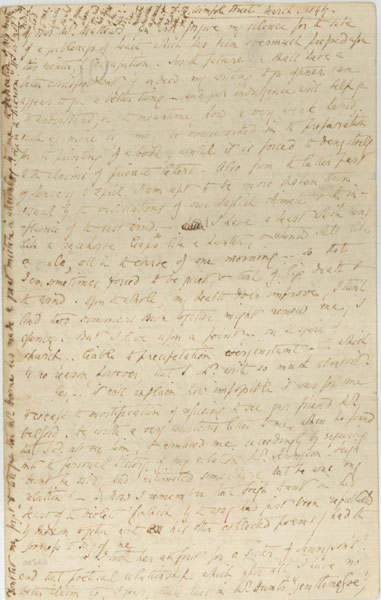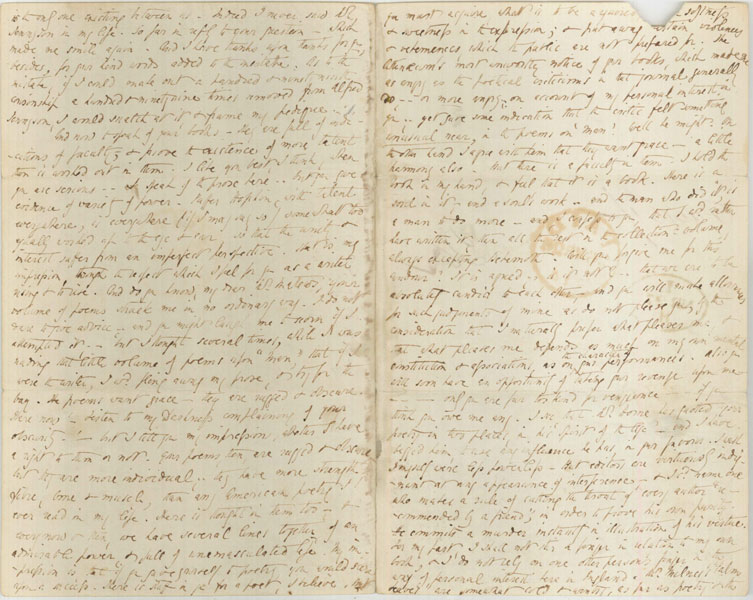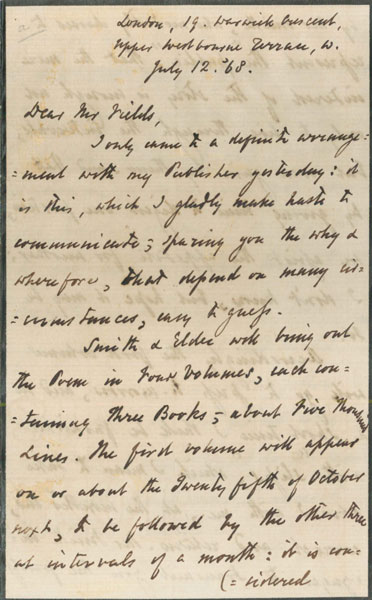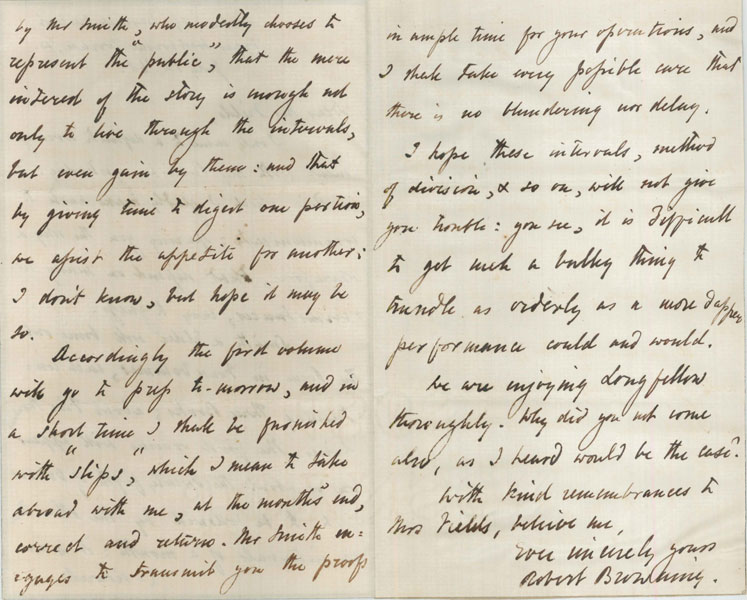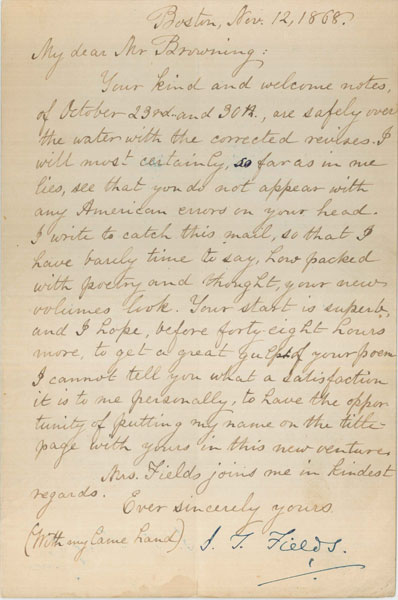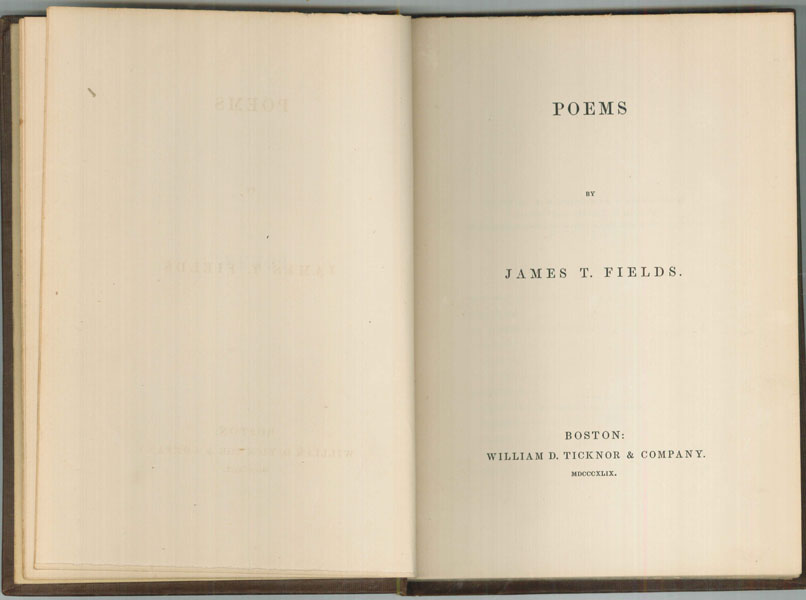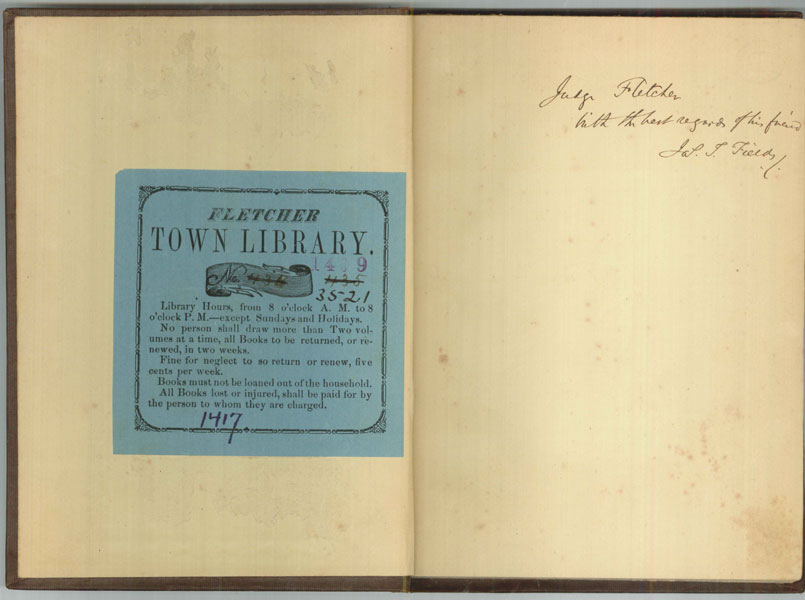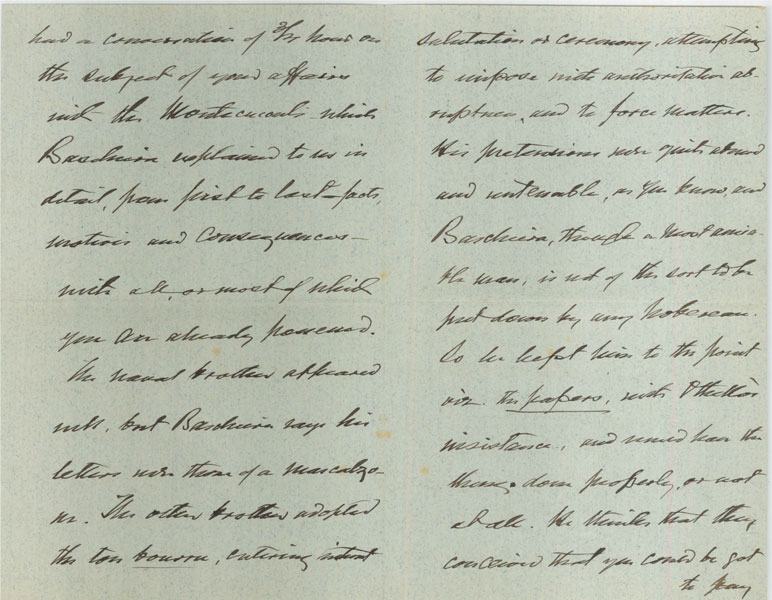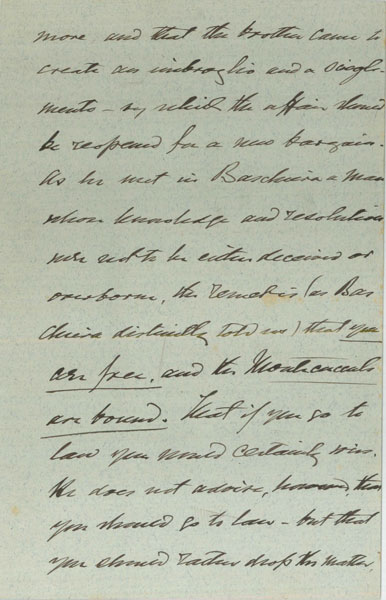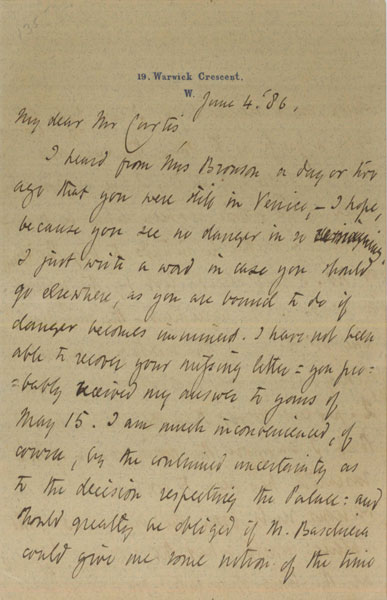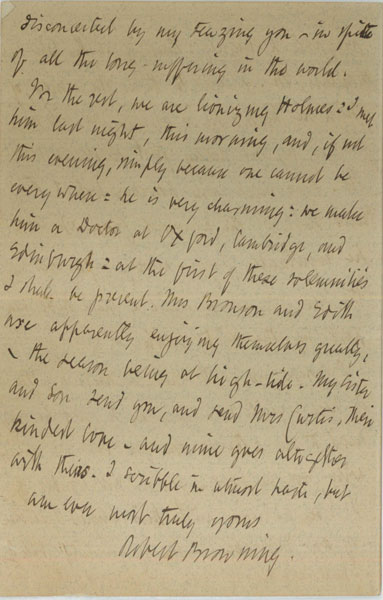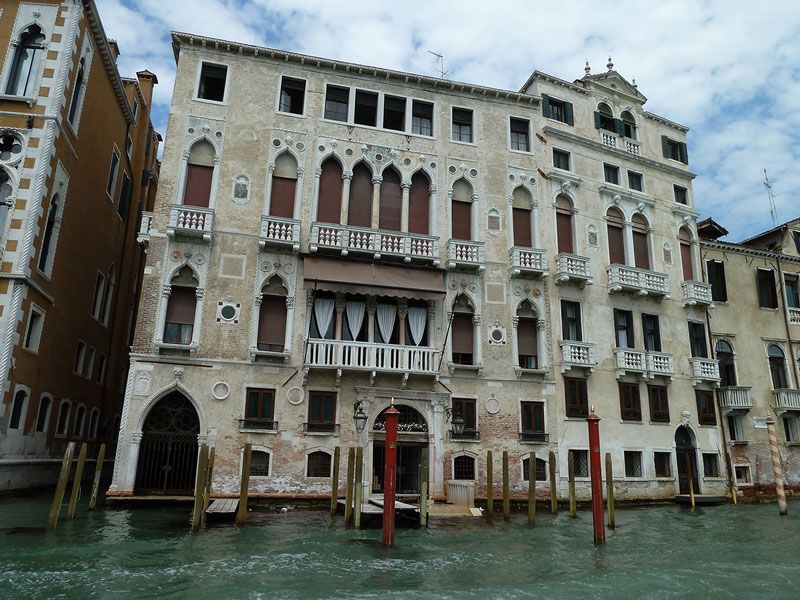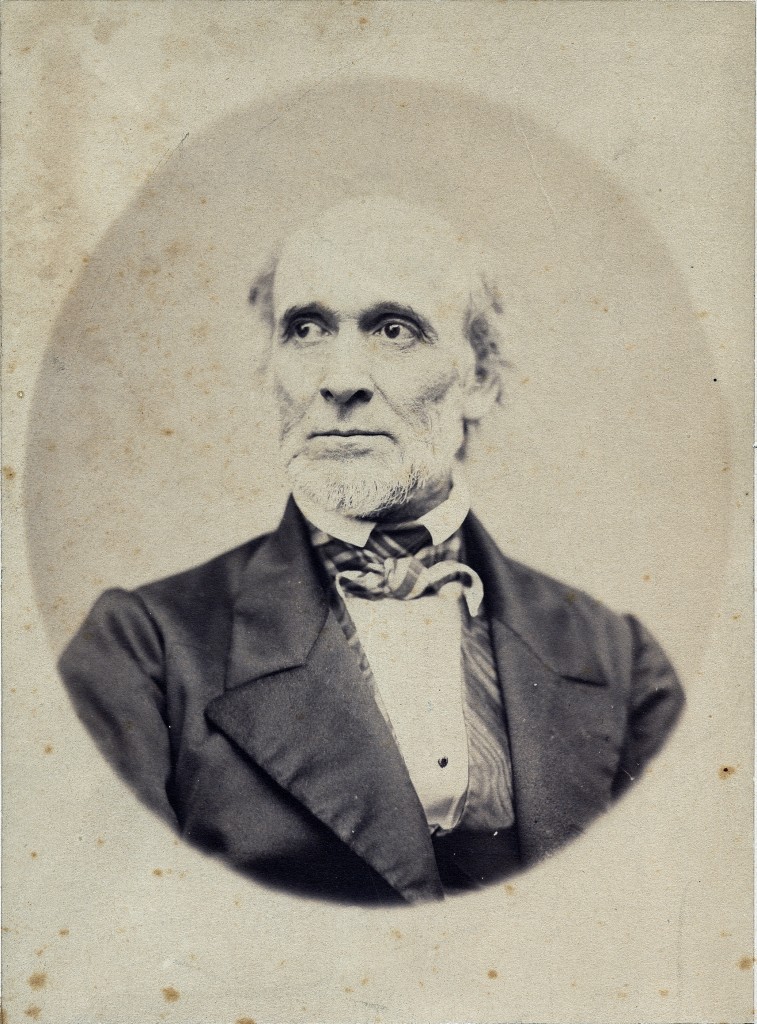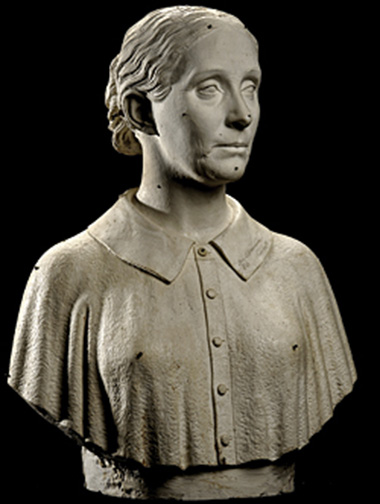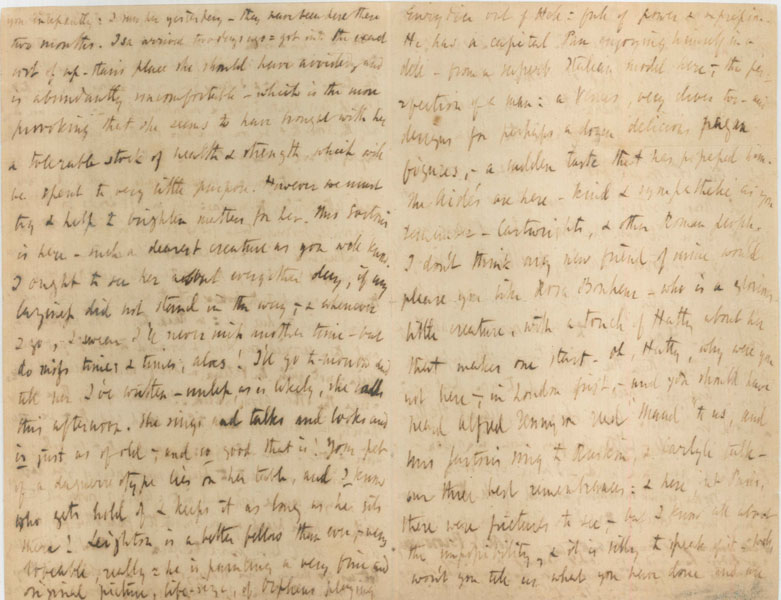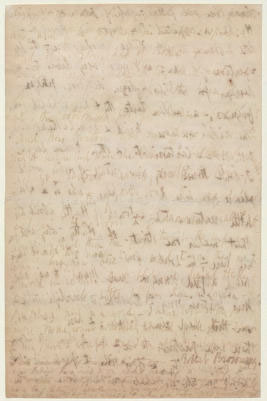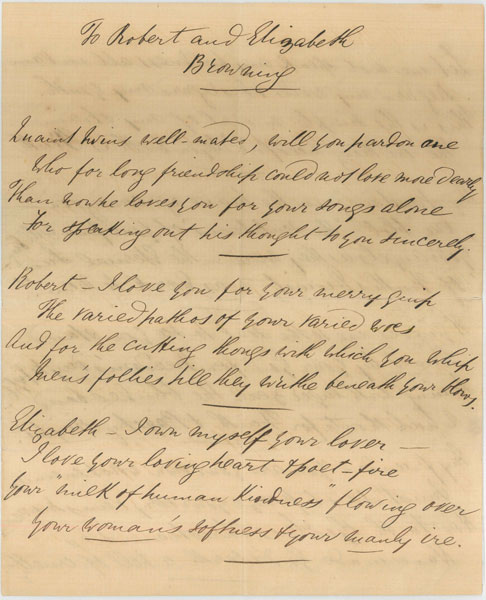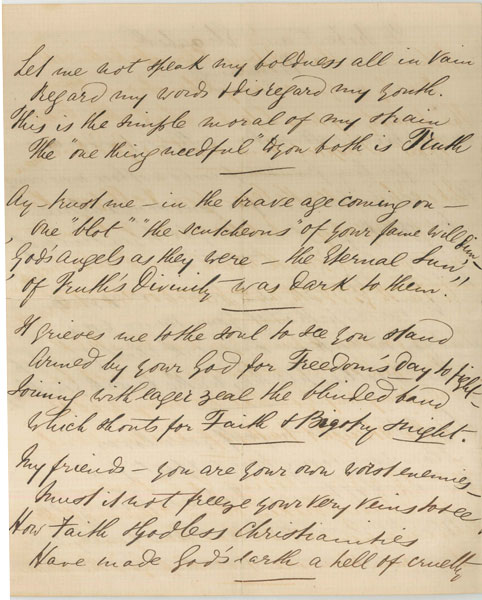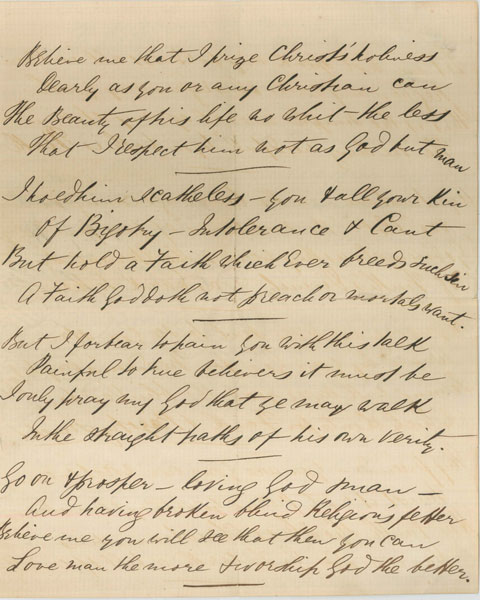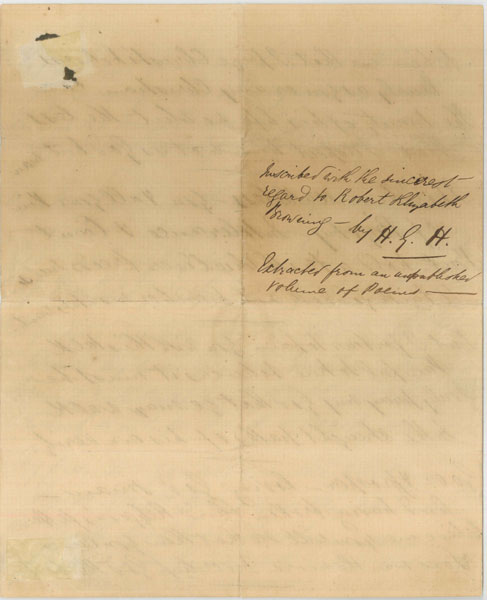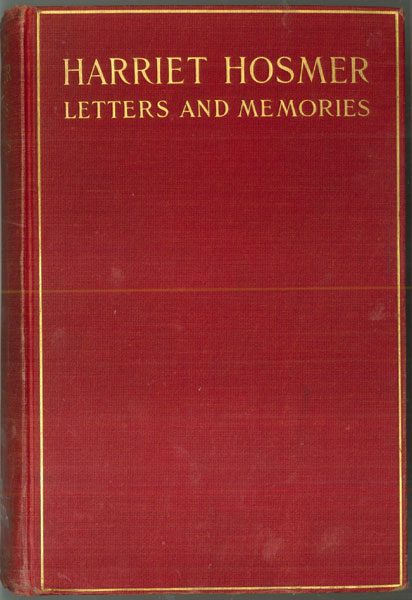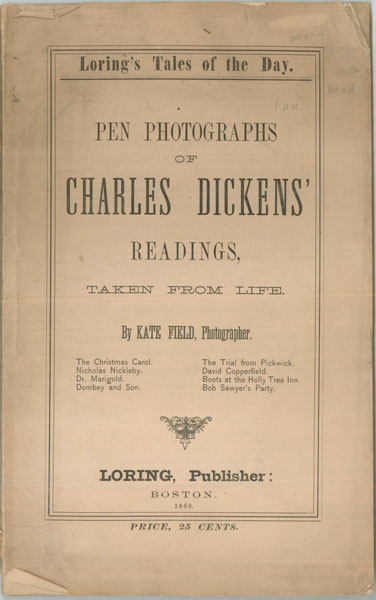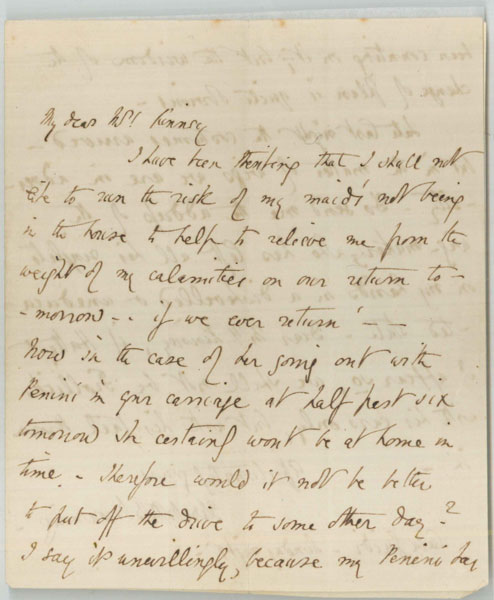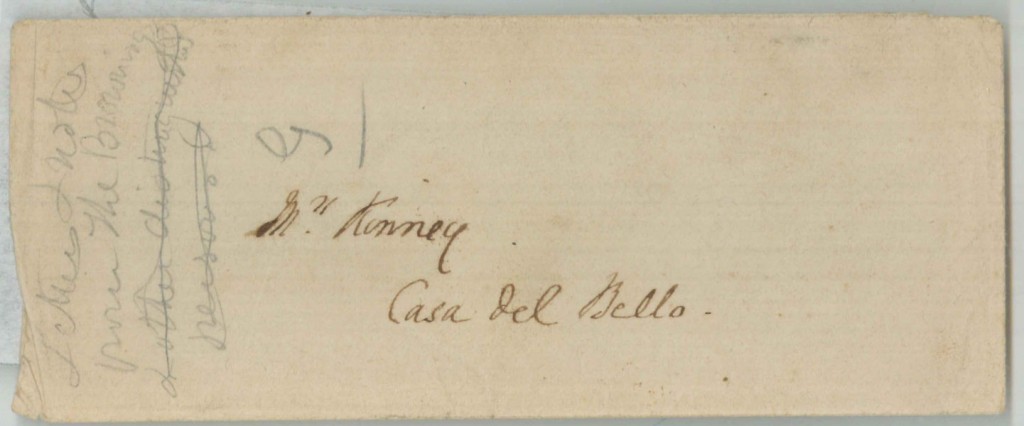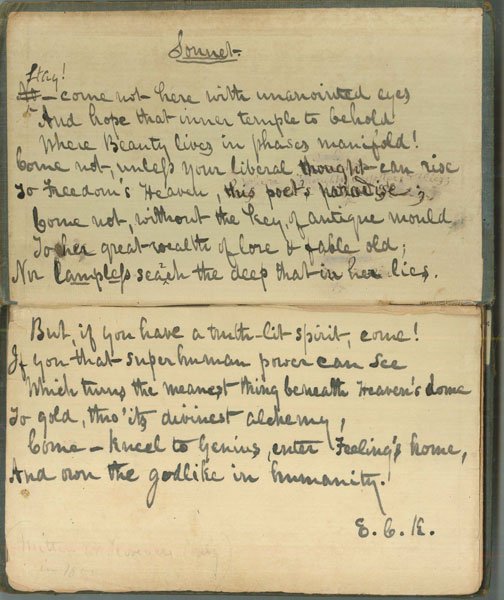 William Wetmore Story (1819-1895) was an American sculptor, art critic, poet, and editor. He was the son of Joseph Story (1779-1845), who served on the Supreme Court of the United States from 1811-1845. Story initially practiced law but abandoned his legal career in 1847 to pursue training in Europe as a sculptor. Story, along with his wife Emelyn (née Eldredge, 1820-1894), daughter Edith “Edie” (1844-1917), and son Joseph “Joe” (1847-1853), met Robert and Elizabeth Barrett Browning in Florence, Italy, in late 1848 or early 1849. The two families became close friends and spent a great deal of time together whenever the Storys were in Italy. Browning and his son Robert Weideman Barrett Browning, called Pen, remained intimate friends of the Storys following Elizabeth’s death in 1861. Story sculpted busts of Robert and Elizabeth, reproductions of which can be viewed in the Martin Entrance Foyer of the Armstrong Browning Library.
William Wetmore Story (1819-1895) was an American sculptor, art critic, poet, and editor. He was the son of Joseph Story (1779-1845), who served on the Supreme Court of the United States from 1811-1845. Story initially practiced law but abandoned his legal career in 1847 to pursue training in Europe as a sculptor. Story, along with his wife Emelyn (née Eldredge, 1820-1894), daughter Edith “Edie” (1844-1917), and son Joseph “Joe” (1847-1853), met Robert and Elizabeth Barrett Browning in Florence, Italy, in late 1848 or early 1849. The two families became close friends and spent a great deal of time together whenever the Storys were in Italy. Browning and his son Robert Weideman Barrett Browning, called Pen, remained intimate friends of the Storys following Elizabeth’s death in 1861. Story sculpted busts of Robert and Elizabeth, reproductions of which can be viewed in the Martin Entrance Foyer of the Armstrong Browning Library.
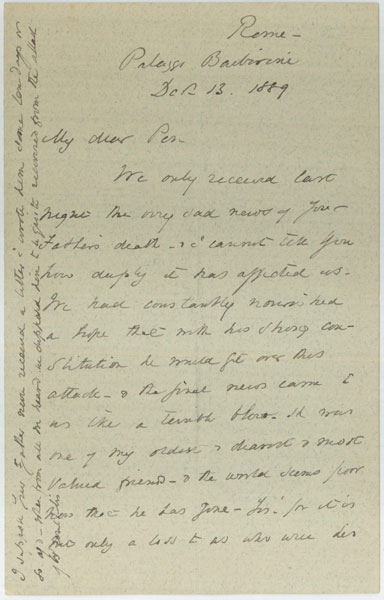
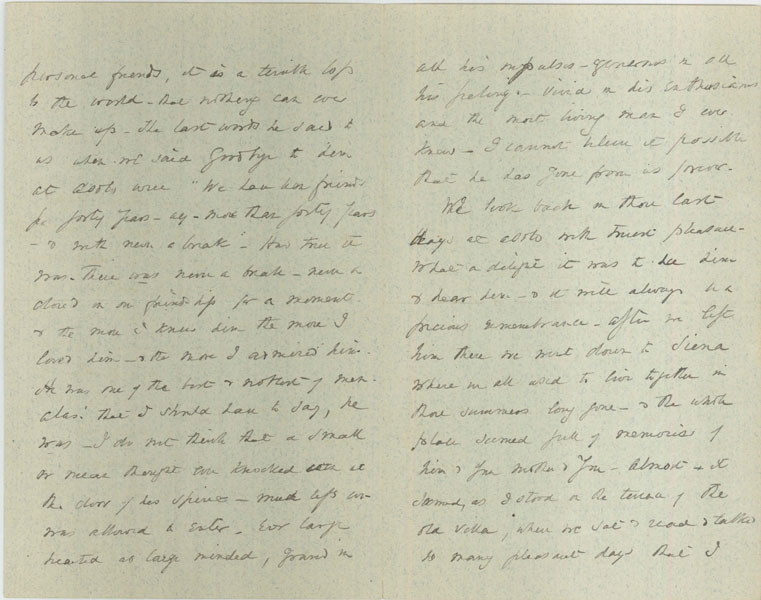
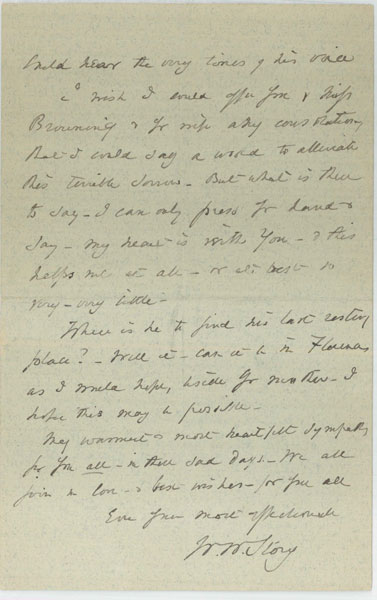 Letter from William Wetmore Story to Robert Weideman Barrett Browning. 13 December 1889.
Letter from William Wetmore Story to Robert Weideman Barrett Browning. 13 December 1889.
In this letter to Robert Browning’s son, Story reflects on his long friendship with Robert Browning following the poet’s death on 12 December 1889:
He was one of my oldest & dearest & most valued friends—& the world seems poor now that he has gone. … The last words he said to us when we said Goodbye to him at Asolo were ‘We have been friends for forty years—ay—more than forty years—& with never a break’– How true it was—there was never a break—never a cloud on our friendship for a moment—& the more I knew him the more I loved him. … He was one of the best & noblest of men. … I do not think that a small or mean thought ever knocked at the door of his spirit—much less ever was allowed to enter– Ever large hearted as large minded, grand in all his impulses—generous in all his feelings—vivid in his enthusiasms and the most loving man I ever knew.
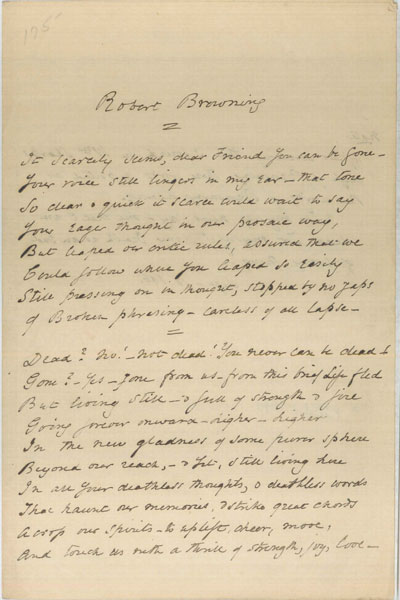
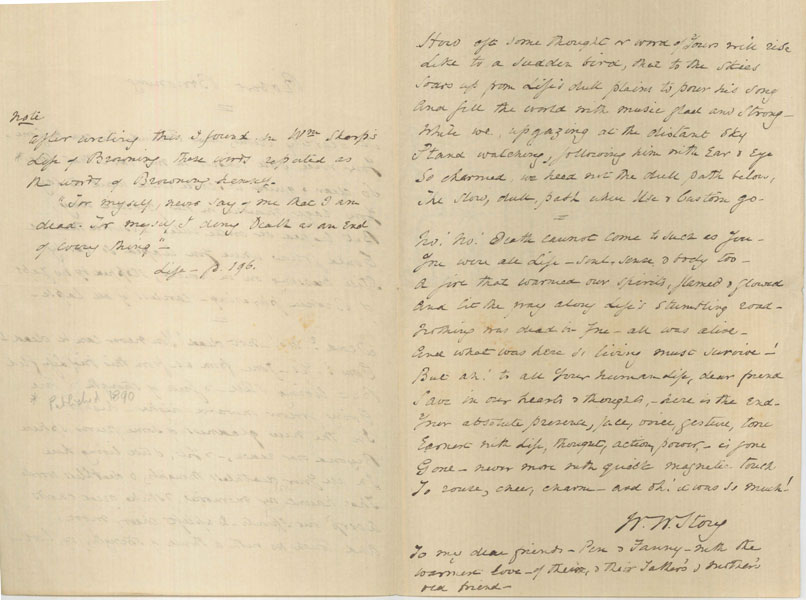 William Wetmore Story. “Robert Browning.” Autograph manuscript. Undated.
William Wetmore Story. “Robert Browning.” Autograph manuscript. Undated.
This poem of thirty-eight lines was signed by Story and presented to Browning’s son and daughter-in-law Fannie Coddington Browning. The inscription reads:
To my dear friends—Pen & Fanny—with the warmest love of their, & their Father’s & Mother’s old friend.
Story’s poem about RB begins:
It scarcely seems, dear Friend you can be gone—
Your voice still lingers in my ear—that tone
So clear & quiet it scarce could wait to say
Your eager thought in our prosaic way,
But leaped our critic rules, assured that we
Could follow where you leaped so easily
Still pressing on in thought, stopped by no gaps
Of broken phrasing—careless of all lapse—
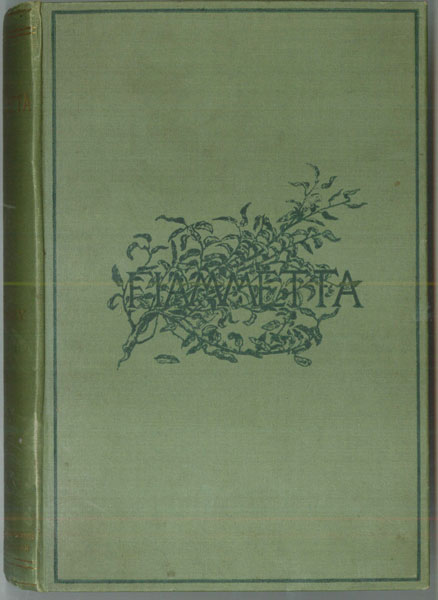 William Wetmore Story. Fiammetta: A Summer Idyl. Edinburgh; London: William Blackwood and Sons, 1886.
William Wetmore Story. Fiammetta: A Summer Idyl. Edinburgh; London: William Blackwood and Sons, 1886.
A member of the Browning family owned a copy of this edition of Story’s novel.
 William Wetmore Story. Graffiti d’Italia. Edinburgh; London: William Blackwood and Sons, 1868.
William Wetmore Story. Graffiti d’Italia. Edinburgh; London: William Blackwood and Sons, 1868.
The poem “Praxiteles and Phryne” is dedicated to Robert Browning.
The Armstrong Browning Library owns one manuscript, eight letters, and eight books by Mr. Story.
 Moncure Daniel Conway was an American abolitionist, Unitarian clergyman, and author. His life took many turns. He moved from being the son of a wealthy slaveholder in Virginia, to a Methodist minister, and to an outspoken abolitionist with transcendental tendancies. He traveled to England to become an advocate for abolition and to Venice, spending most of the remainder of his life in England as minister of the South Place Chapel, occasionally traveling back to the United States. In England, having become a journalist and a literary agent, he admired the poetry of Robert Browning and became a close acquaintance. After his wife died, he moved to France, devoting his life to the peace movement and to writing. He died alone in Paris.
Moncure Daniel Conway was an American abolitionist, Unitarian clergyman, and author. His life took many turns. He moved from being the son of a wealthy slaveholder in Virginia, to a Methodist minister, and to an outspoken abolitionist with transcendental tendancies. He traveled to England to become an advocate for abolition and to Venice, spending most of the remainder of his life in England as minister of the South Place Chapel, occasionally traveling back to the United States. In England, having become a journalist and a literary agent, he admired the poetry of Robert Browning and became a close acquaintance. After his wife died, he moved to France, devoting his life to the peace movement and to writing. He died alone in Paris.Letter from Robert Browning to Moncure Daniel Conway. 20 December 1881.
 Robert Browning. La Saisiaz: The Two Poets of Croisic. London: Smith, Elder and Company, 1878.
Robert Browning. La Saisiaz: The Two Poets of Croisic. London: Smith, Elder and Company, 1878.

